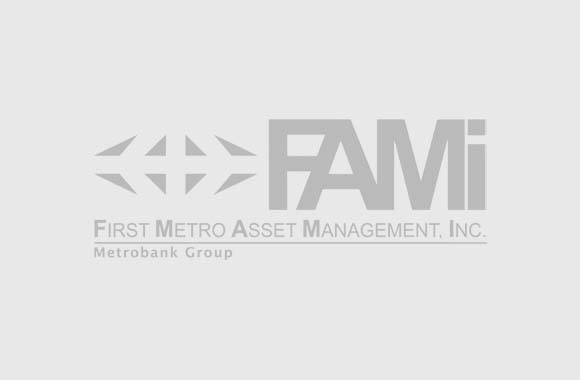Related Articles

Insights and Announcements
FAMI BOOKING ADVISORY: September 1, 2023The Philippine capital markets have been consolidating since the beginning of 2011. In all of 2010, the Philippine financial markets – fixed income, foreign exchange and equity – rallied to record levels. Treasury bill rates touch a record low of 0.7% per annum late in 2010; five and ten year bonds surpassed previous lows in yield to as low as 5 ½ % in the five year and 5 ¾ % in the ten. The government issued a 25-year bond at an opening yield of 8 1/8 % which traded to as low as 7 ¾ % in the secondary market. In the foreign exchange market, the US$/Php had gone to 42.50 in early November from around 46.50 in the beginning of 2010 on account of portfolio flows into the Philippine capital markets. The PSEi was very strong touching an all time high of 4397 on November 5, 2010. The index closed at its highest year-end close on record at 4201.34 – up 37.7% on the year. In 4Q2010, we had a very dynamic economy with domestic employment growth surpassing the one million mark in October. OFW remittances established new highs of around US$ 20 billion for the full year 2010. Together with the growth of exports and industrial production, 4Q2010 GDP rose by 7.1%. Full year 2010 GDP growth was 7.3% – the highest growth the economy had seen in 34 years. Many economists feel that the past year’s performance prepares the foundation for further growth in 2011 because 78% of economic activity in the economy is driven by consumption. Should investment spending pick up in 2011, growth may even be sustained at higher levels. With the government embarking on infrastructure building through a Private-Public Partnership (PPP), the likelihood of an investment-led growth is very strong. The low interest rates locally and even lower rates among the G3 currencies would raise the ability of investors to seek financing for the projects being lined up in the PPP. With a number of infrastructure funds visiting the country in the past few months, there are very strong indications that a number of these infrastructure projects will be started this year. Finally, the strength of the equity markets in 2010 enabled a number of listed companies access additional equity capital. The low level of interest rates likewise enabled companies to raise long-term debt through bond offerings in the domestic and off-shore markets. The question then is why are the equity and the fixed income markets seeing losses at the start of 2011. We see a few cyclical reasons. Primarily, the markets left a lot of paper profits for portfolio managers at end of 2010. They are now taking profits and shifting asset allocation to developed markets. Fixed income, foreign exchange and equity markets are experiencing an exodus of capital from Emerging Markets Asia as global portfolios re-allocate funds to the U.S. and European markets. Are we headed for a bear market? Far from it! The Philippine economy is expected to perform even better in this decade as the economy gains critical mass. Our GIR is at an all time high around US$62 billion and is still growing. Exports are running at US$50 billion for full year 2010 and seems to be unaffected by a strong peso. Foreign fund managers had become wary of the credit tightening in China, India, Indonesia and Thailand because of inflation fears. Agricultural commodity prices have also been moving higher leading fund managers to think that inflation will worsen in the Philippines. The inflation figure in January was released Friday at 3.5% – well within the BSP range of 2.7% to 3.6% for the coming periods. We believe that it will just be a matter of time when foreign funds return in a big way when they see that earnings of Philippine companies remain strong and that Philippine stocks are generally cheap. In 2010, the Philippine Stock Exchange recorded roughly Php 25 billion worth of net foreign buying in the market with approximately Php 8 billion coming in 4Q2010. Year to date 2011, we have already seen Php 5.7 billion in net foreign selling not to mention a similar amount sold in the closing weeks of December. It is very likely that foreign selling will start to slow down soon. The headline index stocks such as AP, AEV, RLC, URC and DMC which were stellar performers in 2010 are around 10% to20% below their 2010 highs. TEL which traded as high as 2760 in late 3Q2010 is now trading at 2440 which is around 11% down from its peak. We can go on with many of the component stocks in the index and see that they are approaching price levels which are attractively priced compared to their prospective performance. Nevertheless, we are maintaining a cautious stance in the market to guard against stock prices going against us. We are also careful not to miss any opportunities that the market presents to us because experience tells us that these occasions occur regularly. All told, we look forward to after portfolio returns of 15% to 20% in equities and 6% to 8% in fixed income. Given that returns available in the banks range only from 3% to 5% on a taxable basis, we remain confident that annual returns in our mutual funds will overshadow the returns in similarly situated investments. Such an outlook should manifest itself more clearly as we navigate through 1Q2011. BY: AUGUSTO M. COSIO President First Metro Asset Management, Inc.
Related Articles

Insights and Announcements
FAMI BOOKING ADVISORY: September 1, 2023We use third-party cookies in order to personalize your site experience